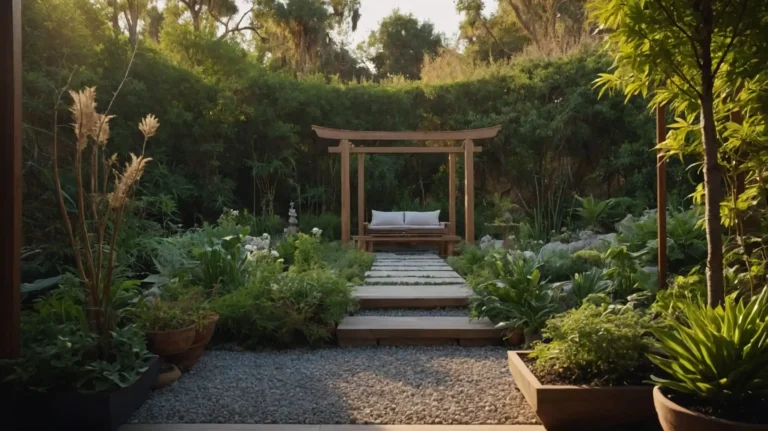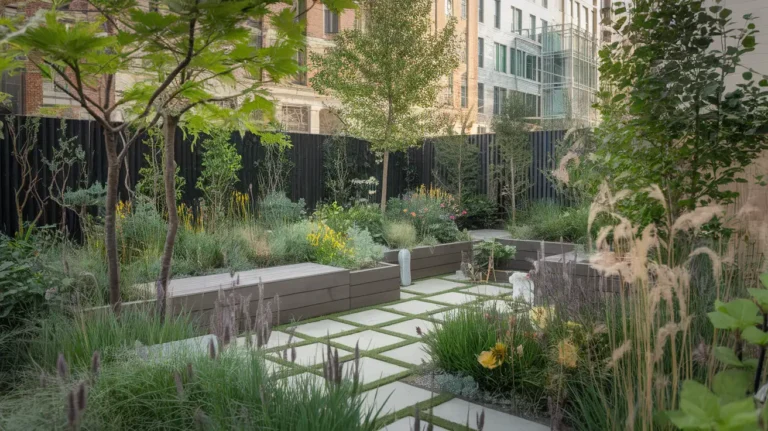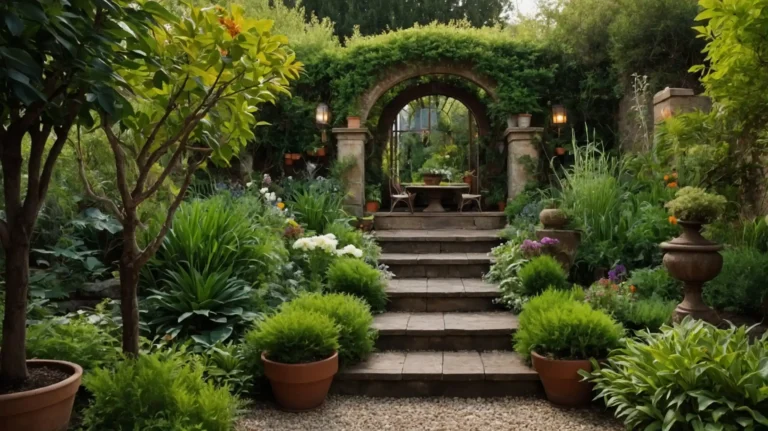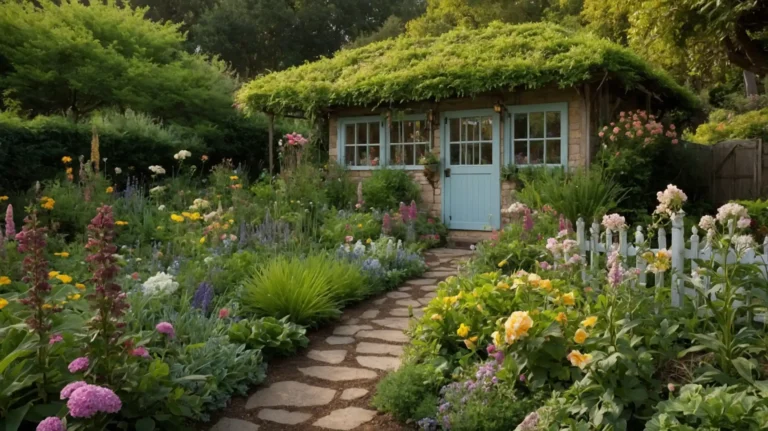How to Start a Low-Maintenance Garden from Scratch
You dream of a beautiful garden but worry about the time and effort required to maintain it.
Creating a low-maintenance garden doesn’t mean sacrificing beauty – it means working smarter, not harder.
With the right planning and plant choices, you can enjoy a thriving outdoor space that practically takes care of itself.
Assess Your Space and Set Realistic Goals

Before you plant a single seed, you need to understand what you’re working with.
Walk around your yard at different times of day, noting which areas receive full sun, partial shade, or complete shade.
These observations guide every decision you’ll make moving forward. Measure your available space and sketch a rough layout.
You don’t need professional drawings – a simple hand-drawn map helps you visualize possibilities and avoid costly mistakes.
Mark existing features like trees, walkways, and utility lines that you’ll need to work around.
Consider your climate zone and local weather patterns. Research your area’s average rainfall, frost dates, and growing season length.
This information determines which plants will thrive naturally in your location without extra care.
Set honest expectations about your time commitment. If you can only spare an hour per week, design accordingly.
A small, well-planned garden brings more satisfaction than an ambitious project that overwhelms you later.
Choose the Right Location for Success
Your garden’s location dramatically impacts its maintenance requirements. Proximity to a water source saves you countless hours of dragging hoses across the yard.
Select the spot that receives appropriate sunlight for your chosen plants while remaining easily accessible from your home.
Position your garden within reach of an outdoor spigot or consider installing a dedicated water line if your budget allows.
Avoid low-lying areas where water pools after rain. These spots create drainage problems that lead to root rot and pest issues.
Similarly, steer clear of areas directly under large trees where you’ll compete with established root systems for nutrients and water.
Consider wind patterns in your yard. Strong prevailing winds stress plants and increase water evaporation, requiring more frequent irrigation.
Natural windbreaks like fences or existing shrubs provide protection and reduce maintenance needs.
Select Plants That Thrive on Neglect
Native plants form the backbone of any low-maintenance garden. Staff members provide valuable insights about plant performance and care requirements.
These species evolved in your local conditions and require minimal supplemental water, fertilizer, or pest control once established.
Visit local nurseries and botanical gardens to see which native plants grow well in your area.
They’ll help you avoid problematic species that look attractive but demand constant attention.
Perennials offer better value than annuals for low-maintenance gardens. Choose varieties known for disease resistance and drought tolerance.
While the initial investment costs more, perennials return year after year, eliminating the need for annual replanting.
Group plants with similar water and sunlight needs together. Research mature plant sizes before purchasing.
This strategy, called companion planting, allows you to care for entire sections efficiently rather than tending individual plants with different requirements.
Overcrowding leads to competition for resources, increased disease pressure, and more frequent pruning needs. Give each plant adequate space to reach its full potential naturally.
Prepare Your Soil for Long-Term Health
Healthy soil reduces maintenance by supporting strong plant growth and natural pest resistance.
Start with a basic soil test to determine pH levels and nutrient content. Many cooperative extension offices provide affordable testing services.
Amend your soil based on test results, but focus on organic improvements rather than quick chemical fixes.
Compost, aged manure, and leaf mold improve soil structure while providing slow-release nutrients that plants access as needed.
Create raised beds if your native soil drains poorly or contains heavy clay. Avoid excessive tilling, which destroys beneficial soil organisms and creates compaction problems.
Raised beds warm up faster in spring, drain more efficiently, and give you complete control over soil quality. Build them 6-8 inches high for adequate drainage.
Instead, add organic matter to the surface and let earthworms and other soil dwellers incorporate it naturally over time.
Install an Efficient Watering System

Proper irrigation reduces your daily garden maintenance while ensuring plants receive consistent moisture.
Drip irrigation systems deliver water directly to plant roots, minimizing waste and reducing weed growth.
Soaker hoses provide a budget-friendly alternative to drip systems. Water deeply but less frequently to encourage deep root growth.
Lay them throughout your garden beds and cover with mulch to prevent UV damage. Connect them to automatic timers for hands-off watering.
Rain gauges help you track natural precipitation and adjust watering schedules accordingly.
Many areas receive adequate rainfall during certain seasons, eliminating the need for supplemental irrigation.
This practice creates drought-resistant plants that survive dry periods without constant attention. Shallow, frequent watering creates weak root systems that require daily care.
Master the Art of Mulching
Mulch serves as your garden’s protective blanket, suppressing weeds, retaining moisture, and regulating soil temperature.
Apply 2-3 inches of organic mulch around plants, keeping it several inches away from plant stems to prevent pest problems.
Organic mulches like shredded bark, wood chips, or leaves decompose slowly, adding nutrients to the soil over time.
Avoid fresh grass clippings or uncomforted materials that can create nitrogen deficiencies or attract pests.
Refresh mulch annually or as needed to maintain adequate coverage. Well-mulched gardens require significantly less weeding and watering than bare soil areas.
This simple step saves hours of maintenance throughout the growing season.
Consider living mulches like low-growing groundcovers in areas where traditional mulch looks inappropriate.
These plants serve the same functions while adding visual interest and habitat for beneficial insects.
Design for Minimal Maintenance
Strategic garden design reduces ongoing care requirements while creating attractive outdoor spaces.
Use geometric shapes and defined edges that are easy to maintain with basic tools. This barrier eliminates the need for frequent edge trimming.
Incorporate hardscaping elements like pathways, borders, and decorative stones to add structure without requiring plant care.
These features provide year-round interest and reduce the planted area you need to maintain.
Create buffer zones between your garden and lawn areas. Install edging materials or plant low-maintenance border plants to prevent grass from invading garden beds.
Plan sight lines from your home’s windows so you can monitor your garden’s progress without daily walks through the space.
This overview helps you spot problems early before they become major maintenance issues.
Choose Tools That Make Work Easier
Invest in quality tools that make garden tasks more efficient and enjoyable. A good spade, pruning shears, and garden hose pay for themselves through years of reliable service.
Wheeled tools like garden carts and rolling kneelers reduce physical strain and make garden work more comfortable.
These investments become especially valuable as you age or if you have physical limitations.
Ergonomic tool designs reduce hand and wrist fatigue during extended garden sessions.
Look for padded grips, lightweight materials, and tools sized appropriately for your height and strength.
Store tools properly to extend their lifespan and keep them readily available when needed.
A simple tool shed or garage storage system prevents rust and damage while keeping everything organized.
Plan for Seasonal Changes
Design your garden to provide interest throughout the year without requiring seasonal plant changes.
Choose plants with attractive foliage, interesting bark, or architectural forms that look good even when not flowering.
Select plants with different bloom times to extend your garden’s flowering season naturally.
Early spring bulbs, summer perennials, and fall-blooming asters create continuous color without replanting.
Leave ornamental grasses and seed heads standing through winter for visual interest and wildlife habitat.
This approach reduces fall cleanup while providing food sources for birds during cold months.
Plan major maintenance tasks for specific seasons when they’re most effective.
Fall planting, spring fertilizing, and summer pruning align with natural plant cycles and reduce overall work.
Avoid Common Low-Maintenance Mistakes
Don’t assume “low-maintenance” means “no-maintenance.” Resist the temptation to overfertilize in hopes of faster growth.
Even the most self-sufficient gardens benefit from occasional weeding, watering during drought, and seasonal cleanup.
Excessive fertilizer creates soft, disease-prone growth that requires more frequent pruning and pest management.
Avoid planting aggressive spreaders without proper containment. Don’t plant everything at once.
Plants like mint, bamboo, and some ornamental grasses can quickly overtake neighboring plants, creating more work than they’re worth.
Stagger plantings over several seasons to spread out costs and workload while learning what grows best in your specific conditions.
Maintain Your Garden’s Health Long-Term

Establish a simple maintenance routine that prevents small problems from becoming major issues.
Weekly garden walks help you spot pest problems, disease symptoms, or watering needs before they become critical.
Keep a garden journal to track what works well and what doesn’t in your specific location.
This information guides future plant choices and helps you refine your low-maintenance strategies over time.
Connect with local gardening communities for ongoing support and plant exchanges. Master
Gardener programs, garden clubs, and online forums provide valuable resources for troubleshooting problems and discovering new low-maintenance techniques.
Build relationships with neighbors who garden successfully in your area.
Their experience with local growing conditions proves invaluable for avoiding common mistakes and finding the best plant sources.
Conclusion
Your low-maintenance garden journey starts with smart planning and plant selection.
Focus on native species, proper soil preparation, and efficient watering systems to create a beautiful, self-sustaining outdoor space.







